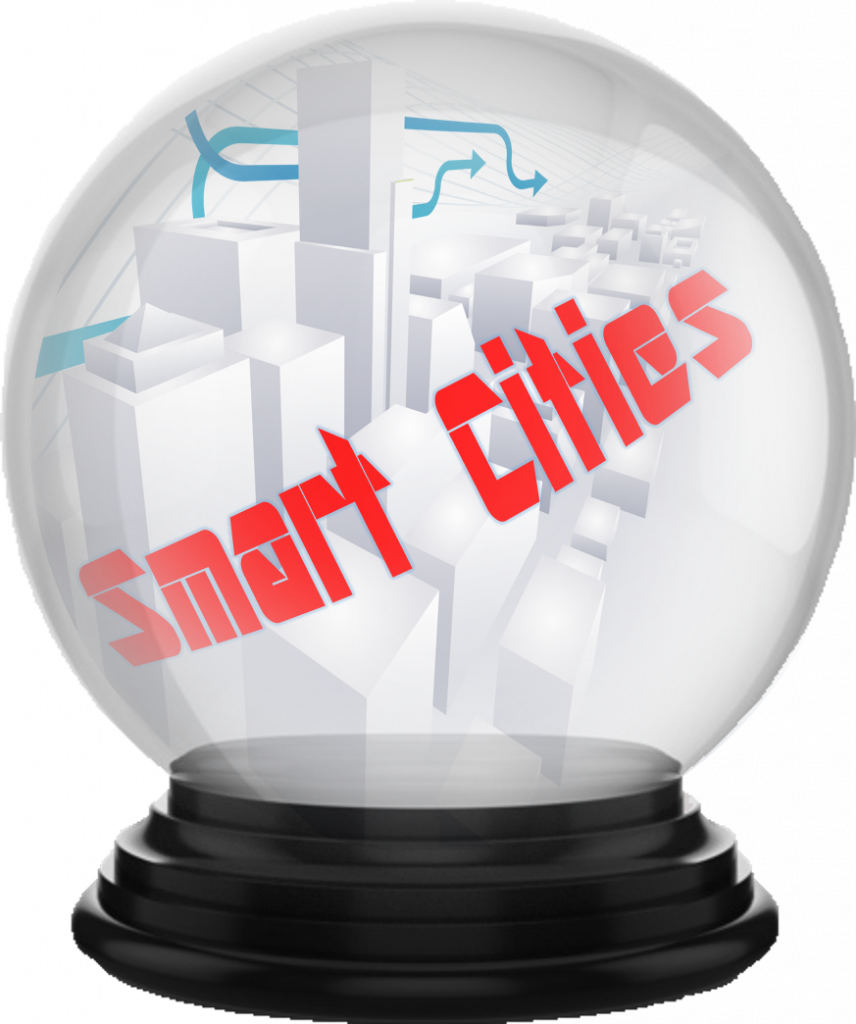Few people would argue cities are smart enough about how they manage systems and use resources and there’s no reason to get smarter. There are numerous skeptics, however, who worry smart city technologies will erode privacy and cede governmental control to large technology vendors. Laura Bliss (@mslaurabliss) summarizes the skepticism this way: “Despite the grand social promises, and even with good intentions, tech companies entering into public space don’t always act with the presumed interests of the public in mind. They’re not really supposed to; at the end of the day, their missions are driven by shareholders, not altruism. There’s nothing wrong with that basic fact. But it’s one that seems to get lost in the fog of whatever a ‘smart city’ is. In 2019, when dealing with software, cities should upgrade with care.”[1] Given that caution is required, the imperative of the smart city movement is nevertheless a reality. Analysts from Huawei explain, “Cities are pillars of economic growth for a nation, but they are also often examples of severe inefficiency — as more people move to them, creaking infrastructure can no longer support the population, critical services go undelivered or underdelivered, and the sprawl becomes unmanageable. People feel isolated and lonely within the concrete jungle, and in general it becomes an unpleasant place to be.”[2] The smart city movement aims to make cities more efficient and effective while improving the quality of life for those living in urban areas. IBM believes cities are based on six core systems that should be optimized both individually and holistically. Those “systems” are: people; business; transport; communication; water; and energy. I would add a seventh system — waste management (which would include both trash and sanitation). Below are some of the trends that could impact how those systems evolve.
Smart city trends
People. Smart city discussions should always begin with people. Teena Maddox (@teena_maddox) notes, “Smart cities are more than a trend — they’re the wave of the future as the world becomes more urban, with 60% of the population expected to live in cities by 2050.”[3] Smart city projects are aimed at providing people with better services, improved safety, and a better quality of life. For the most part, smartphones will be the way people connect to smart city capabilities. The smartphone will also provide a new way for citizens to pay for city services. Kristin Musulin (@kristinmusulin) and Chris Teale (@chris_teale) explain, “The era of ubiquitous smartphone use and a societal shift away from cash payments has unveiled new opportunities for cities to update payment options across various departments, from transportation to public works.”[4] Chris Penrose, President of IoT Solutions at AT&T, predicts, “Smart cities will use network technology in new ways to engage citizens, such as gamification. City residents will get points for things like paying their water bill on time, recycling, reporting potholes, and for taking public transit instead of driving. Those points will be redeemable for discounts on services, or VIP access to events in the city.”[5]
Business. The smart cities movement affects businesses in several ways from smart building technology to new business models. Cities continue to wrestle with Digital Age businesses like Uber, Lyft, Airbnb, and dockless bike and scooter companies. Cities will continue to struggle with policies that protect traditional hospitality and transportation businesses while accommodating newer gig business models.
Transport. Although some cities are experimenting with self-driving public transportation, driverless vehicles probably won’t make a significant impact on urban transportation in the near-term. Upgrading more traditional public transportation systems and improving urban parking are more probable near-term projects. Musulin and Teale note, “Shared mobility companies are … pushing consumers away from personal vehicle usage but also by encouraging new uses of individual parking spaces. E-scooter giant Bird touts that one traditional car space can fit 10 scooters, suggesting that cities can begin transforming car-assigned parking spots into scooter spaces.”
Communications. Connectivity provides the circulatory system for a smart city and data is its lifeblood. Morné Erasmus, CommScope’s director of business development for smart cities, explains, “Applications drive the need for more bandwidth: parking, smart meters, public safety (surveillance cameras), traffic management, 5G small cell densification, waste management and the coordination of departments for emergency services are just a few examples.”[6] Expect continued battles between cities, states, and the federal government about 5G is implemented and regulated.
Water. Reese Tisdale (@ReeseTisdale), President of Bluefield Research, observes, “Municipal water is arriving — if it has not already — at a crossroads at which long-established and proven water and wastewater utility management practices are being challenged. Calls for increased adoption of more advanced solutions — digital water, reclaimed water use, decentralized treatment — are forcing water service providers to take note.”[7] He asserts advanced (i.e., smart) technologies will make a big difference in municipal water systems. “Improved asset management could be a game-changer for municipal water markets,” he writes. “Players from across the utility operating spectrum are extending their offerings to incorporate asset-centric products and services. From multiple angles (leak detection, pressure management, workflow management), solutions providers are looking to operationalize historic data in asset-centric decision-making. Smarter, more advanced asset management strategies will help water utilities avoid $41.9 billion in capital expenditures by 2027.”
Energy. Smart grids connected to smart buildings are the next step in smart city energy usage. Beyond the more efficient use of energy, cities are looking for cleaner energy as well. Taylor Donovan Barnett writes, “The idea of having a zero emission city is not too far away from becoming reality. The future smart city will include a host of clean energy sources to power its city. Energy in smart cities is efficient, using less energy because of the constant real-time data collection and analysis.”[8]
Other services. Franco Castaldini, Chief Commercial Officer at ThoughtWire, predicts, “In the near future, smart building technology will integrate with smart city services to save lives by automatically updating first responders on security lockdowns, building fires and medical emergencies.”[9]
Concluding thoughts
As city leaders proceed with smart city initiatives, they need to keep in mind they are first and foremost trying to improve the lives of citizens. Erasmus concludes, “Cities are implementing smart-city applications because they improve efficiency, reduce costs, generate new sources of revenue, and, most importantly, improve the lives of their citizens.” The primary capability required to make smart cities work is connectivity. Scott Allen, CMO of FreeWave Technologies, explains, “A wide range of reporting devices, such as sensors, visibility devices and other endpoints, create the data that makes a smart city work. With this information, freely exchanged, complex city systems can be managed in real-time and, with sufficient integration, to minimize unintended consequences.”[10]
Footnotes
[1] Laura Bliss, “2018 Was the Year of the Smart City Skeptic,” Citylab, 27 December 2018.
[2] Huawei, “What The Future Of Smart Cities Looks Like,” CIO, 27 November 2018.
[3] Teena Maddox, “Top smart city predictions for 2019,” TechRepublic, 19 December 2018.
[4] Kristin Musulin and Chris Teale, “6 trends that will define smart cities in 2019,” Smart Cities Dive, 2 January 2019.
[5] Maddox, op. cit.
[6] Morné Erasmus, “Trends for 2019: Smart Cities,” RFID Journal, 16 December 2018.
[7] Reese Tisdale, “The Changing Water Landscape,” WaterWorld, 1 December 2018.
[8] Taylor Donovan Barnett, “5 Things You Will See in the Future of ‘Smart City’,” Interesting Engineering, 14 December 2018.
[9] Ken Briodagh, “Smart City Industry Predictions for 2019,” IoT Evolution, 27 December 2018.
[10] Barnett, op. cit.





